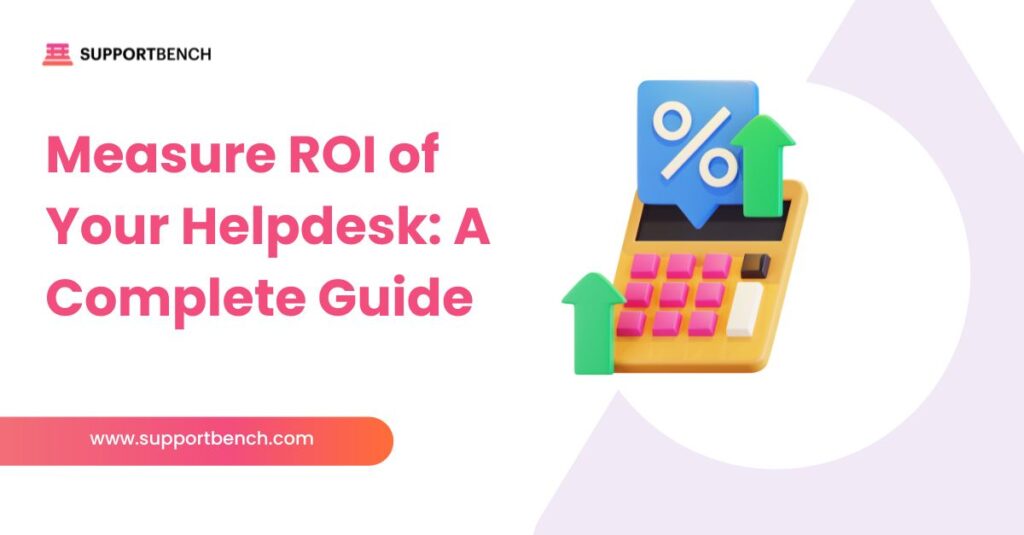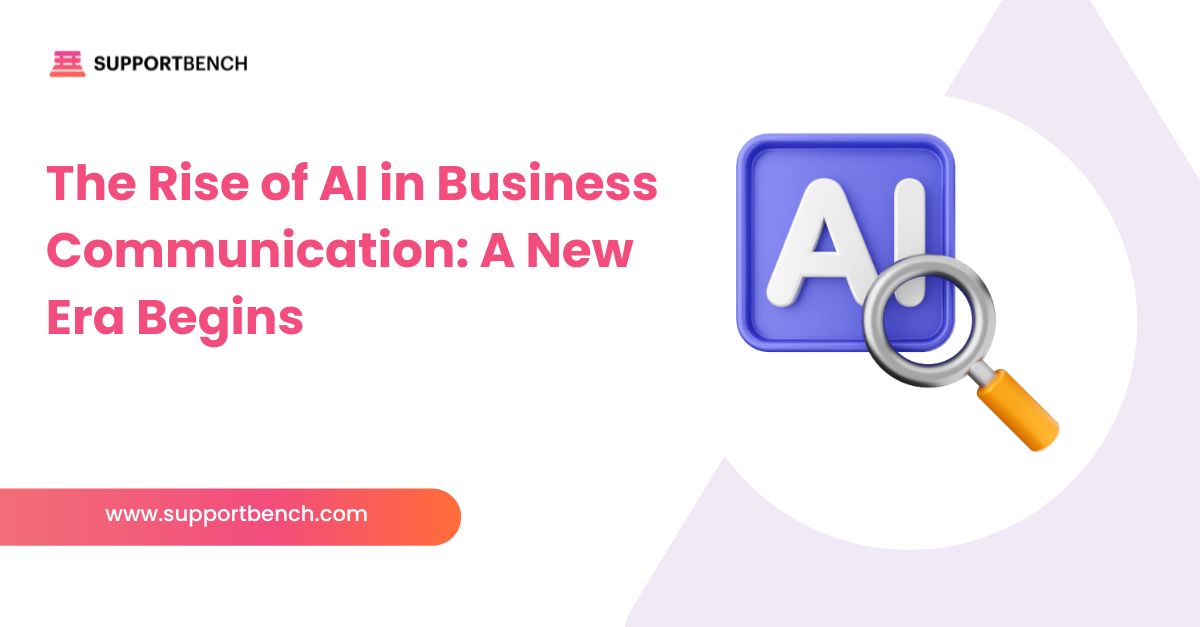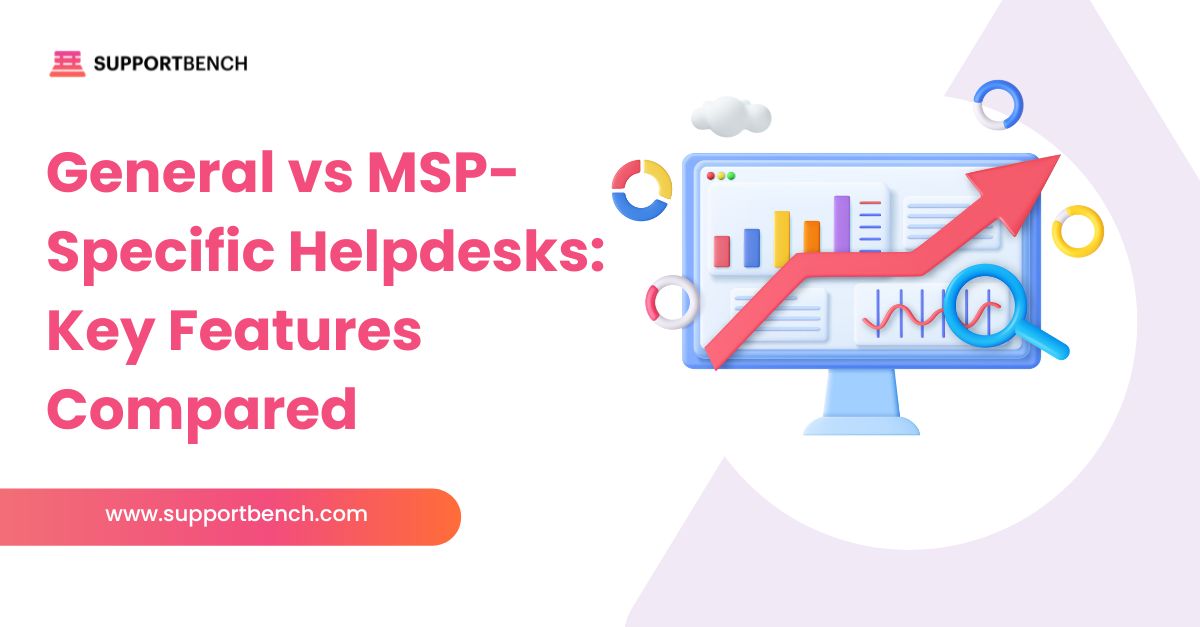Every dollar spent on support should drive real value. But how do you know if your helpdesk is performing as it should?
For support leaders and IT managers, measuring the return on investment (ROI) of helpdesk operations is key. It helps justify budgets, spot inefficiencies, and align your support team’s performance with business goals.
A Helpdesk ROI Calculator simplifies this process. It compares the cost of your operations—like agent salaries and software—against the value created, such as faster resolution times, lower ticket volumes, and higher customer satisfaction.
This guide walks you through how to build and use a Helpdesk ROI Calculator, why it matters, and how platforms like Supportbench make tracking performance and value easy.

Here is the Quick Answer:
A Helpdesk ROI Calculator helps measure the value your support team delivers relative to its costs. By tracking metrics like ticket volume, resolution time, and customer satisfaction, you can quantify financial and operational impact. Use it to justify budgets, identify improvement areas, and transform your helpdesk into a strategic asset.
What is a Helpdesk ROI Calculator?
A Helpdesk ROI Calculator is a tool that helps you evaluate how efficiently your support operations convert costs into measurable value.
At its core, ROI is calculated with a simple formula:
ROI (%) = (Total Benefits – Total Costs) ÷ Total Costs × 100
What Goes Into the Calculation?
- Benefits: These include cost reductions per ticket, faster resolution times, fewer escalations, improved agent productivity, and stronger customer satisfaction scores.
- Costs: These cover agent salaries, software licenses, training, hardware, and related support expenses.
By entering key data—like ticket volumes, handle times, agent wages, and CSAT scores—you can calculate the true impact of your helpdesk operations.
Platforms like Supportbench simplify this process with built-in reporting dashboards that pull real-time performance data and trend analysis—making it easier to quantify the value you’re delivering.
Why Calculate Helpdesk ROI
Measuring ROI is more than just a budgeting exercise—it’s about transforming your helpdesk from a cost centre into a strategic asset that drives long-term value.
1. Reframe Support as a Value Generator
Too often, support is seen as a necessary expense. Calculating ROI helps shift the conversation. It shows how effective ticket handling, automation, and self-service tools save time, reduce costs, and increase customer retention.
2. Speak the Language of Leadership
ROI resonates with executives. When you quantify how first-contact resolution improvements or reduced average handle times impact the bottom line, you give leadership a clear business case for investing in support.
3. Track More Than Just Dollars
Financials matter, but so do key metrics like CSAT, NPS, and agent productivity. These “soft” metrics signal long-term customer loyalty and internal efficiency—key drivers of brand strength and operational resilience.
4. Justify Future Investments
Want to upgrade your tech stack, implement new workflows, or expand your team? A well-documented ROI baseline and improvement forecast help you make the case with evidence.
✅ Supportbench’s analytics and performance dashboards make these conversations easier by turning customer experience data into strategic insights.
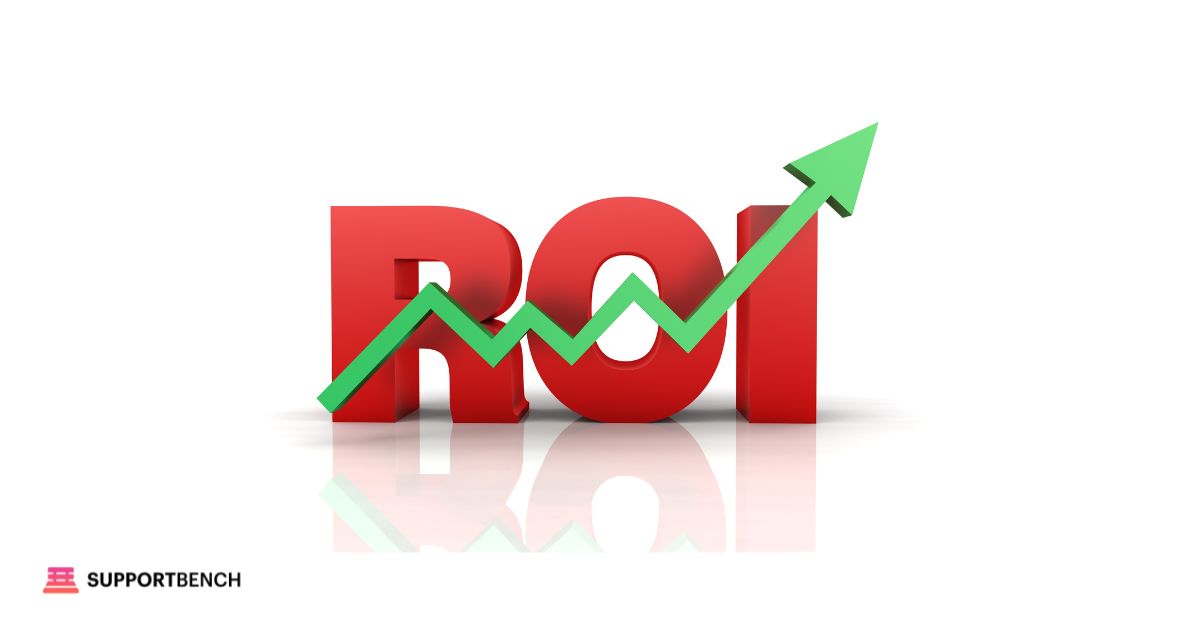
Key ROI Components to Measure
An accurate helpdesk ROI calculation requires more than just cost tracking—it should capture the full value delivered across several dimensions.
Financial ROI
Direct and indirect costs tied to helpdesk operations, including salaries, This includes direct costs like salaries, software subscriptions, and infrastructure, along with indirect savings from reduced customer churn or fewer escalations.
Example: If automation reduces the need for 200 manual responses per week, and each one takes 4 minutes, you’re saving 13+ agent hours weekly.
Time ROI
Efficiency is currency. Faster resolution times and fewer follow-ups translate into more capacity for agents to handle higher-impact issues or improve service quality.
Track improvements in average handle time, resolution speed, and backlog reduction to quantify time saved.
Emotional ROI
Positive customer experiences boost loyalty and reduce complaints. Improvements in CSAT or NPS reflect increased trust in your brand—and decreased need for recovery efforts.
Emotional ROI may not show up on spreadsheets, but it heavily influences customer retention and referrals.
Effort ROI
Not all wins require equal effort. Some projects (like implementing a self-service portal) may demand significant setup but deliver sustained value.
Use effort vs. value analysis to prioritize initiatives that offer the highest impact for the least disruption.

Building Your Own Helpdesk ROI Calculator
Creating a simple, effective Helpdesk ROI Calculator involves five clear steps. You don’t need to be a data analyst—just gather the right inputs, apply consistent formulas, and model improvement scenarios.
Step 1: Gather Input Metrics
Start by collecting baseline data:
- Monthly or annual ticket volume
- Average handle time (in minutes or hours)
- Fully loaded agent salary (hourly cost)
- First-Contact Resolution (FCR) rate
- Escalation rate
- CSAT or NPS scores (optional but useful)
These numbers form the foundation of your calculator.
Step 2: Calculate Baseline Costs
Use this simple equation:
Total Support Cost = Tickets × Handle Time × Salary Per Hour
This gives you a clear picture of what your support currently costs—before optimization.
Step 3: Project Benefit Scenarios
Model the potential impact of improvements. For example a 15% drop in handle time, a 10% improvement in FCR, or reduced escalation volumeZ
Then quantify the benefit:
Saved Agent Hours = Tickets × Handle Time × Improvement %
Financial Savings = Saved Hours × Salary Per Hour
You can repeat this across multiple dimensions to estimate total benefit.
Step 4: Factor in All Costs
Account for expenses like:
- Helpdesk software licenses
- Setup and configuration fees
- Training and onboarding costs
- Hardware or IT services
- Ongoing platform maintenance
This ensures your ROI is grounded in the full financial picture.
Step 5: Compute ROI
Use the standard formula:
ROI (%) = (Total Benefits – Total Costs) ÷ Total Costs × 100
Run different models: conservative, expected, and optimistic. This gives stakeholders realistic ranges of return.
Best Practices for Using the Calculator
A Helpdesk ROI Calculator is only as effective as how you use it. To ensure your insights are accurate and actionable, follow these key practices.
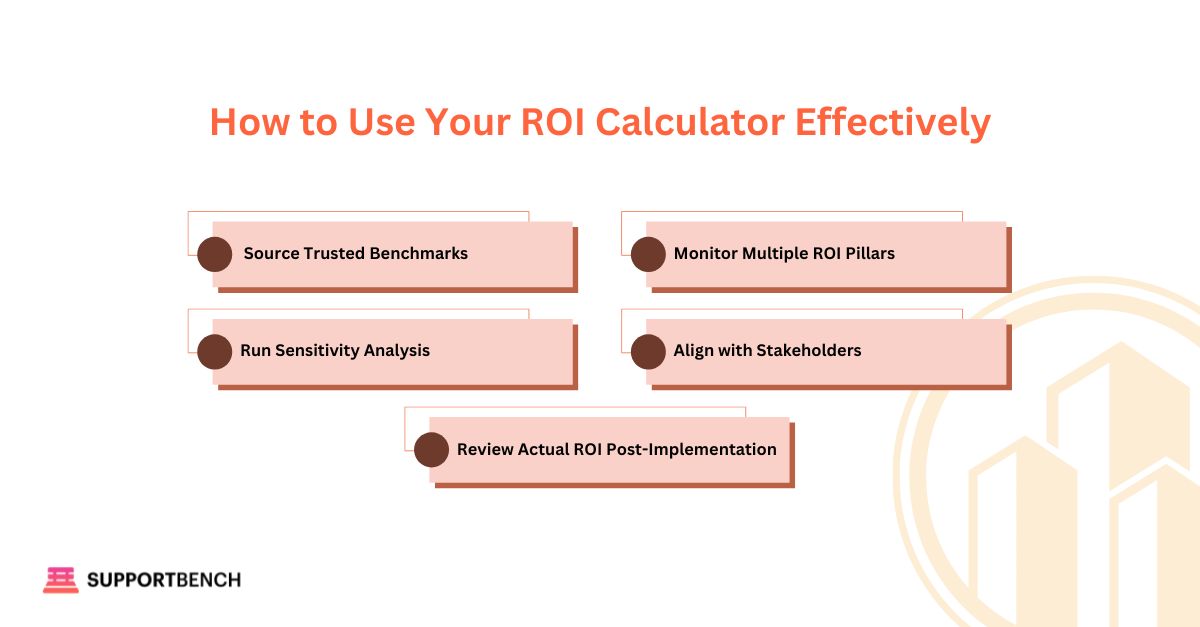
Source Trusted Benchmarks
Use industry-standard reports and reliable internal metrics. Refer to benchmarks from HDI, Gartner, or customer service surveys to validate your assumptions. This ensures your projections carry weight in executive discussions.
Monitor Multiple ROI Pillars
ROI isn’t just financial. Pay attention to:
- Time ROI: Agent hours saved through automation
- Emotional ROI: Improvements in customer experience and loyalty (CSAT, NPS)
- Effort ROI: The return from tasks relative to how hard they are to implement
Tracking multiple dimensions gives a more complete view of operational effectiveness.
Run Sensitivity Analysis
Model three scenarios for every ROI projection:
- Conservative: Small improvements in metrics
- Expected: Mid-range assumptions
- Optimistic: Best-case changes
This approach helps you prepare for uncertainty and communicate risks more confidently.

Align with Stakeholders
Present ROI in terms that matter to different departments:
- Finance: Cost savings and return on investments
- Operations: Time freed up for strategic projects
- Leadership: Impact on customer retention and brand loyalty
Tailoring the message helps secure buy-in across the organization.
Review Actual ROI Post-Implementation
Don’t stop at projections. After changes go live, compare projected and actual results:
- Were agent hours reduced as expected?
- Did CSAT or FCR improve?
- Did technology investments pay off?
Use these insights to refine future improvements and strengthen internal trust in ROI modeling.
Conclusion
A Helpdesk ROI Calculator isn’t just a budgeting tool—it’s a strategic asset. By quantifying the value your support operations deliver, you gain the insight needed to:
✔ Improve cost-efficiency
✔ Justify investments in tools and training
✔ Track the impact of automation and process changes
✔ Elevate your helpdesk from a cost centre to a value generator
Whether you’re aiming to improve response times, reduce agent workload, or strengthen customer loyalty, measuring ROI gives you the visibility to act confidently.
Supportbench makes this even easier. With built-in analytics, customizable dashboards, SLA tracking, and AI-powered ticket automation, our platform helps you track real-time ROI without extra tools or spreadsheets.
If you’re ready to take a more data-driven approach to support operations, book a free consultation with Supportbench. We’ll help you understand where you stand, where to improve, and how to deliver measurable results through better customer support.


